Anna Kicherer
Grouping Shapley Value Feature Importances of Random Forests for explainable Yield Prediction
Apr 14, 2023Abstract:Explainability in yield prediction helps us fully explore the potential of machine learning models that are already able to achieve high accuracy for a variety of yield prediction scenarios. The data included for the prediction of yields are intricate and the models are often difficult to understand. However, understanding the models can be simplified by using natural groupings of the input features. Grouping can be achieved, for example, by the time the features are captured or by the sensor used to do so. The state-of-the-art for interpreting machine learning models is currently defined by the game-theoretic approach of Shapley values. To handle groups of features, the calculated Shapley values are typically added together, ignoring the theoretical limitations of this approach. We explain the concept of Shapley values directly computed for predefined groups of features and introduce an algorithm to compute them efficiently on tree structures. We provide a blueprint for designing swarm plots that combine many local explanations for global understanding. Extensive evaluation of two different yield prediction problems shows the worth of our approach and demonstrates how we can enable a better understanding of yield prediction models in the future, ultimately leading to mutual enrichment of research and application.
Behind the leaves -- Estimation of occluded grapevine berries with conditional generative adversarial networks
May 21, 2021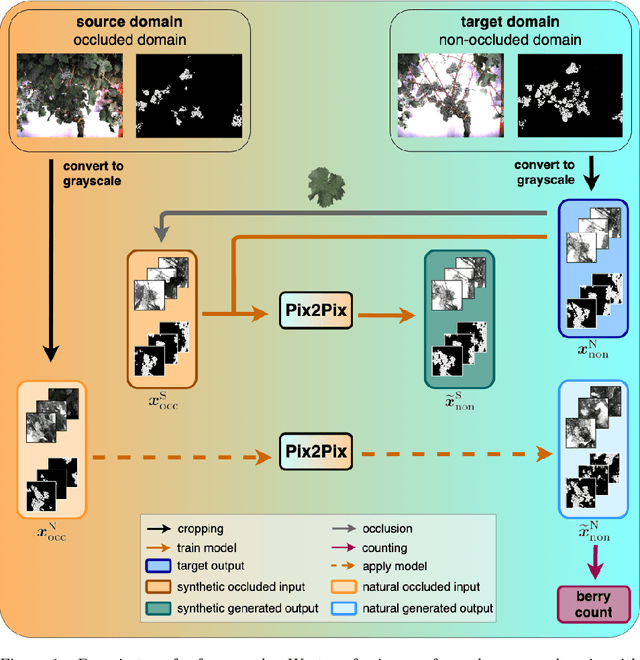
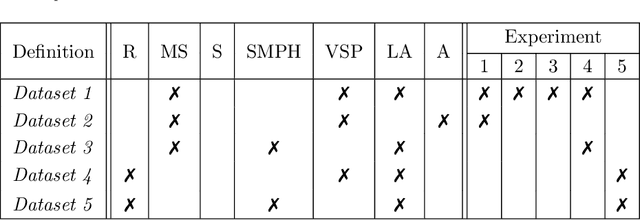

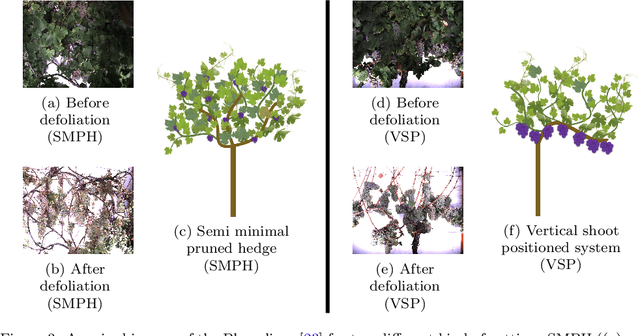
Abstract:The need for accurate yield estimates for viticulture is becoming more important due to increasing competition in the wine market worldwide. One of the most promising methods to estimate the harvest is berry counting, as it can be approached non-destructively, and its process can be automated. In this article, we present a method that addresses the challenge of occluded berries with leaves to obtain a more accurate estimate of the number of berries that will enable a better estimate of the harvest. We use generative adversarial networks, a deep learning-based approach that generates a likely scenario behind the leaves exploiting learned patterns from images with non-occluded berries. Our experiments show that the estimate of the number of berries after applying our method is closer to the manually counted reference. In contrast to applying a factor to the berry count, our approach better adapts to local conditions by directly involving the appearance of the visible berries. Furthermore, we show that our approach can identify which areas in the image should be changed by adding new berries without explicitly requiring information about hidden areas.
Counting of Grapevine Berries in Images via Semantic Segmentation using Convolutional Neural Networks
Apr 29, 2020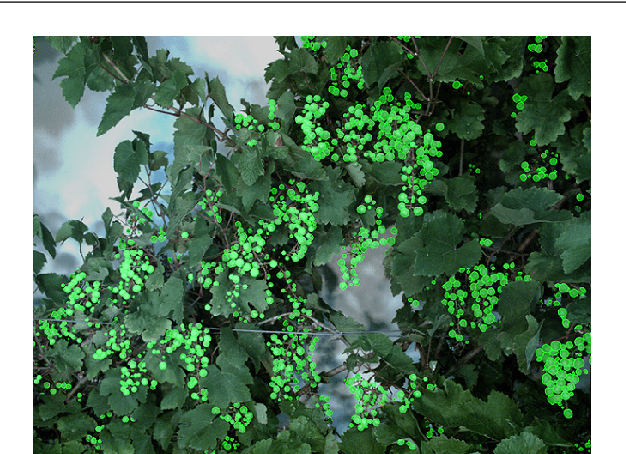

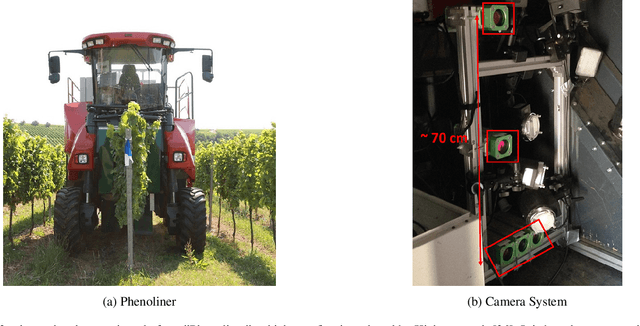

Abstract:The extraction of phenotypic traits is often very time and labour intensive. Especially the investigation in viticulture is restricted to an on-site analysis due to the perennial nature of grapevine. Traditionally skilled experts examine small samples and extrapolate the results to a whole plot. Thereby different grapevine varieties and training systems, e.g. vertical shoot positioning (VSP) and semi minimal pruned hedges (SMPH) pose different challenges. In this paper we present an objective framework based on automatic image analysis which works on two different training systems. The images are collected semi automatic by a camera system which is installed in a modified grape harvester. The system produces overlapping images from the sides of the plants. Our framework uses a convolutional neural network to detect single berries in images by performing a semantic segmentation. Each berry is then counted with a connected component algorithm. We compare our results with the Mask-RCNN, a state-of-the-art network for instance segmentation and with a regression approach for counting. The experiments presented in this paper show that we are able to detect green berries in images despite of different training systems. We achieve an accuracy for the berry detection of 94.0% in the VSP and 85.6% in the SMPH.
Detection of Single Grapevine Berries in Images Using Fully Convolutional Neural Networks
May 01, 2019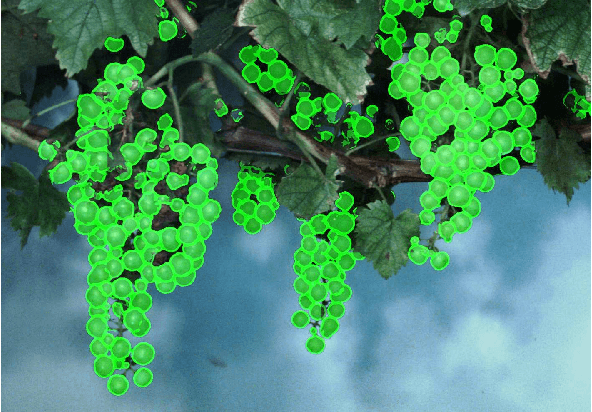

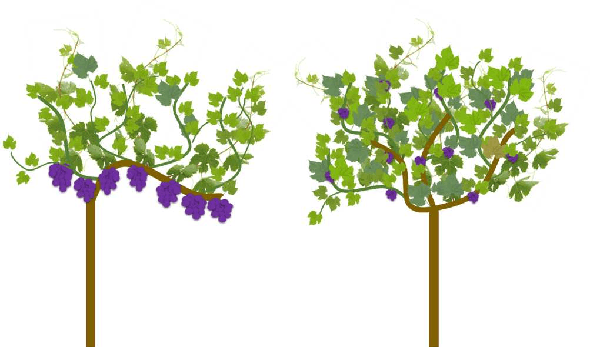

Abstract:Yield estimation and forecasting are of special interest in the field of grapevine breeding and viticulture. The number of harvested berries per plant is strongly correlated with the resulting quality. Therefore, early yield forecasting can enable a focused thinning of berries to ensure a high quality end product. Traditionally yield estimation is done by extrapolating from a small sample size and by utilizing historic data. Moreover, it needs to be carried out by skilled experts with much experience in this field. Berry detection in images offers a cheap, fast and non-invasive alternative to the otherwise time-consuming and subjective on-site analysis by experts. We apply fully convolutional neural networks on images acquired with the Phenoliner, a field phenotyping platform. We count single berries in images to avoid the error-prone detection of grapevine clusters. Clusters are often overlapping and can vary a lot in the size which makes the reliable detection of them difficult. We address especially the detection of white grapes directly in the vineyard. The detection of single berries is formulated as a classification task with three classes, namely 'berry', 'edge' and 'background'. A connected component algorithm is applied to determine the number of berries in one image. We compare the automatically counted number of berries with the manually detected berries in 60 images showing Riesling plants in vertical shoot positioned trellis (VSP) and semi minimal pruned hedges (SMPH). We are able to detect berries correctly within the VSP system with an accuracy of 94.0 \% and for the SMPH system with 85.6 \%.
An Adaptive Approach for Automated Grapevine Phenotyping using VGG-based Convolutional Neural Networks
Nov 23, 2018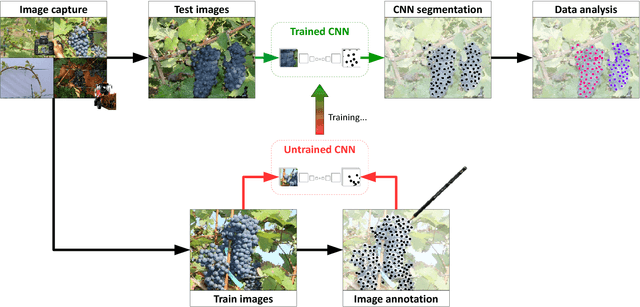
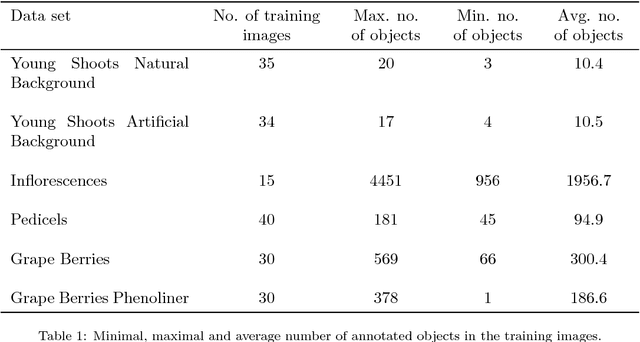
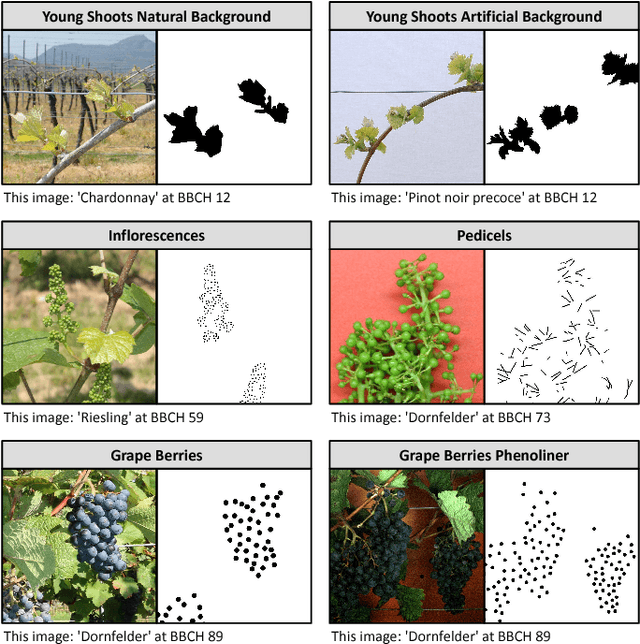
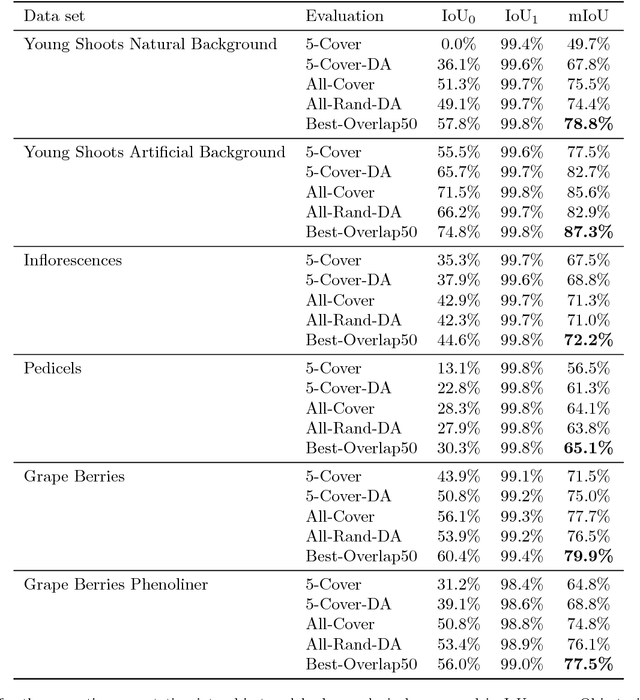
Abstract:In (grapevine) breeding programs and research, periodic phenotyping and multi-year monitoring of different grapevine traits, like growth or yield, is needed especially in the field. This demand imply objective, precise and automated methods using sensors and adaptive software. This work presents a proof-of-concept analyzing RGB images of different growth stages of grapevines with the aim to detect and quantify promising plant organs which are related to yield. The input images are segmented by a Fully Convolutional Neural Network (FCN) into object and background pixels. The objects are plant organs like young shoots, pedicels, flower buds or grapes, which are principally suitable for yield estimation. In the ground truth of the training images, each object is separately annotated as a connected segment of object pixels, which enables end-to-end learning of the object features. Based on the CNN-based segmentation, the number of objects is determined by detecting and counting connected components of object pixels using region labeling. In an evaluation on six different data sets, the system achieves an IoU of up to 87.3% for the segmentation and an F1 score of up to 88.6% for the object detection. The reason for the good results is the combination of a powerful CNN architecture and very precise and accurate image annotations.
Automated Image Analysis Framework for the High-Throughput Determination of Grapevine Berry Sizes Using Conditional Random Fields
Dec 15, 2017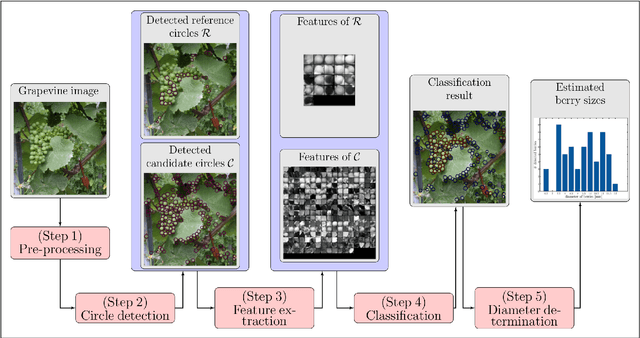
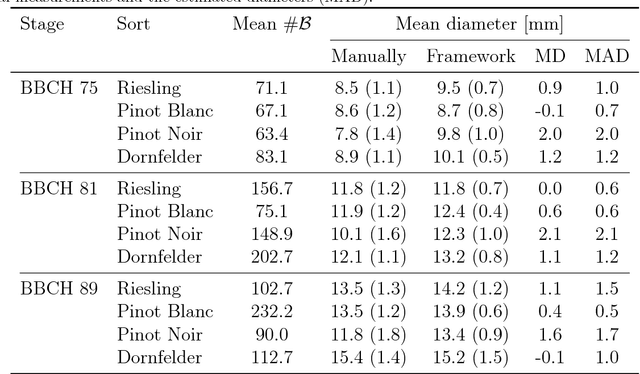
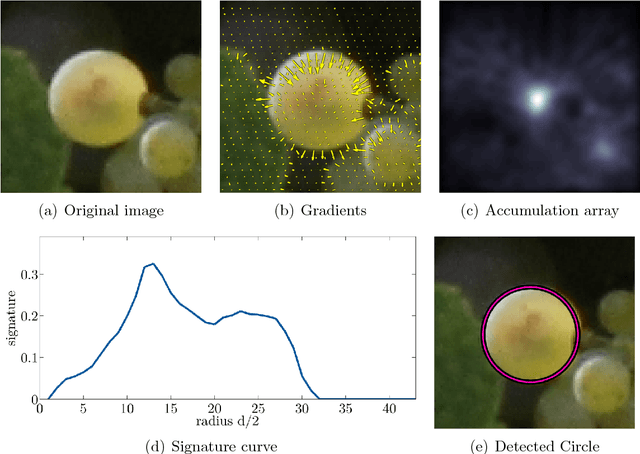
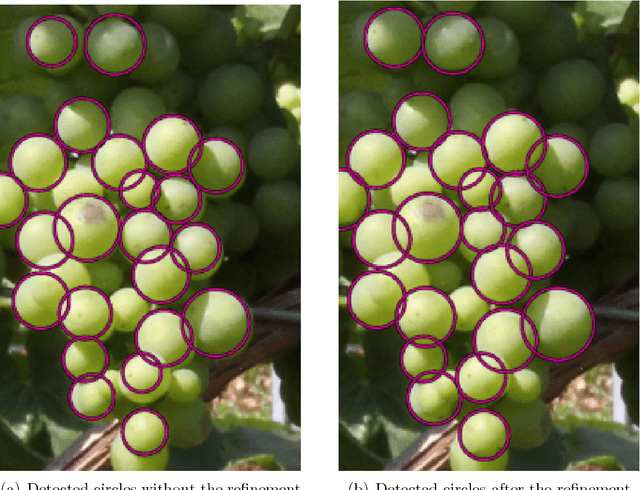
Abstract:The berry size is one of the most important fruit traits in grapevine breeding. Non-invasive, image-based phenotyping promises a fast and precise method for the monitoring of the grapevine berry size. In the present study an automated image analyzing framework was developed in order to estimate the size of grapevine berries from images in a high-throughput manner. The framework includes (i) the detection of circular structures which are potentially berries and (ii) the classification of these into the class 'berry' or 'non-berry' by utilizing a conditional random field. The approach used the concept of a one-class classification, since only the target class 'berry' is of interest and needs to be modeled. Moreover, the classification was carried out by using an automated active learning approach, i.e no user interaction is required during the classification process and in addition, the process adapts automatically to changing image conditions, e.g. illumination or berry color. The framework was tested on three datasets consisting in total of 139 images. The images were taken in an experimental vineyard at different stages of grapevine growth according to the BBCH scale. The mean berry size of a plant estimated by the framework correlates with the manually measured berry size by $0.88$.
 Add to Chrome
Add to Chrome Add to Firefox
Add to Firefox Add to Edge
Add to Edge